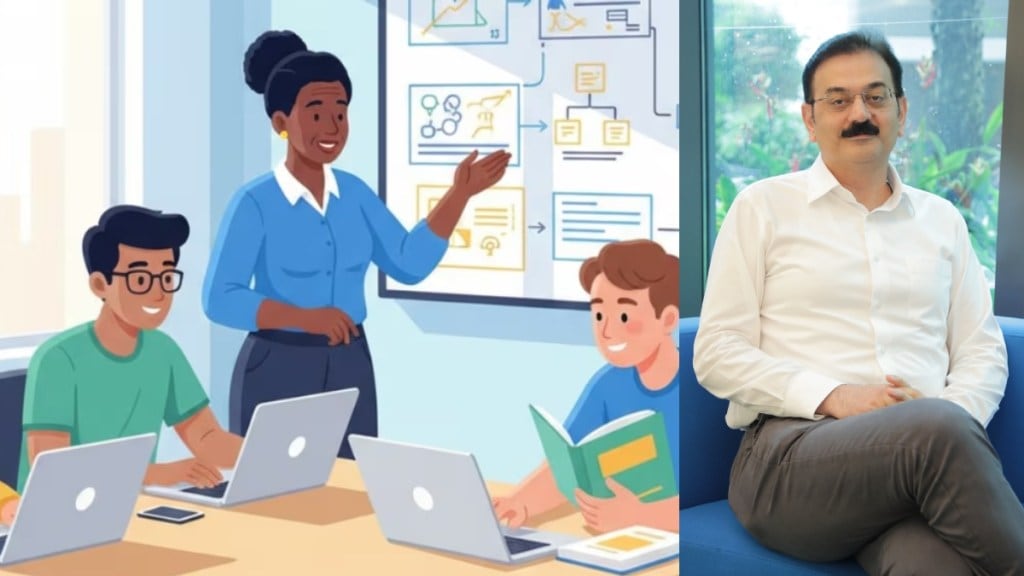By Rajeev Koul
India today stands at a defining moment in its growth story. With global recognition for its economic dynamism, digital transformation and rising geopolitical influence, the nation is positioned to take a historic leap forward. Yet, the question that lies at the heart of this ambition is simple: Do we have the human capital to sustain this momentum?
The answers lie not in boardrooms or policy corridors alone but in the nation’s classrooms. Self-reliance under Atmanirbhar Bharat, large-scale youth employment and fostering innovation will remain unrealised ambitions unless education becomes the anchor connecting policy intent with ground-level outcomes.
Education as the Foundation of Self-Reliance
India’s aspirations for self-reliance cannot succeed without a skilled, adaptable, and future-ready workforce. With nearly 65% of our population below the age of 35 and over 250 million school-going children, the demographic dividend is immense, but so is the responsibility. Youth employability depends on more than degrees; it requires the practical skills, digital fluency, and entrepreneurial mindset that the economy demands.
The widening skills gap is a critical challenge. According to an India Skills Report 2024, only 51% of Indian youth are employable, with gaps especially pronounced in digital literacy, STEM, problem-solving, and communication skills. Unless schools realign learning outcomes with these demands, India risks creating a generation of educated yet unemployable youth.
Nurturing Innovation Through Education
Innovation and entrepreneurship are not confined to research labs or incubators; they begin in the curiosity of a child. The resilience to experiment, the creativity to explore, and the confidence to fail and try again must be cultivated early in classrooms.
India’s innovation potential is evident. The country climbed to 40th position in the Global Innovation Index 2023, up from 81st in 2015. But sustaining this rise will depend on how well our education system nurtures innovation from the ground up.
Countries like Singapore and Finland demonstrate how education systems can be powerful engines of innovation. Their success is rooted in contextualised approaches where education aligns seamlessly with national development goals. India, too, must design its own model, rooted in its diversity and challenges, to nurture homegrown innovators and problem-solvers.
Key Priorities for Education Transformation
To anchor India’s ambitions, education must undergo a systemic transformation. Four priorities stand out:
Curriculum Relevance: The time has come to move beyond rote memorisation and focus on future-ready skills. A World Economic Forum report predicts that by 2030, more than 85 million jobs globally may be displaced, while 97 million new roles will emerge in areas such as AI, green energy, and advanced manufacturing. Indian curricula must align with this shift.
Teacher Empowerment: No reform can succeed without empowering teachers. According to UNESCO, India will need 11 lakh additional teachers by 2030 to meet growing demand. Equipping teachers with continuous training, digital tools, and recognition is critical for lasting impact.
Equity and Access: India cannot afford a two-speed education system where urban children access world-class education while rural and marginalised groups are left behind. While enrolment has improved, the ASER 2023 report still highlights learning gaps, with only 43% of Grade 8 students able to solve basic division problems. Bridging this divide is vital for social stability and inclusive growth.
Technology Integration: The digital revolution offers India a powerful opportunity to scale quality education. Yet, a Ministry of Education survey (2022) revealed that only 29% of rural households had access to the Internet. Expanding digital infrastructure and integrating adaptive learning platforms can transform access and quality simultaneously.
Schools as the Bedrock of Growth
Strong schools are not just centres of learning, they are the foundation of a nation’s economic growth, social cohesion, and global competitiveness. The vision is clear: To prepare students not only for jobs of today but for the industries and challenges of tomorrow. India’s leap forward cannot be built on temporary fixes or isolated initiatives. It must rest on a sustainable, future-ready education revolution. The leaders
A Collective Call to Action
Policymakers, educators, industry leaders, and communities must come together to place education at the centre of India’s growth agenda. National missions on manufacturing, digital innovation, or climate resilience will succeed only if powered by an education system that produces skilled, creative, and resilient citizens.
As I firmly believe that Education is the foundation on which India’s future rests. We must adopt a strategic approach to build an education system that is closely aligned with the nation’s evolving economic ambitions and social priorities.
On this path from vision to reality, the choice is ours. By making education the anchor of India’s growth, we can ensure that the world’s youngest population becomes its greatest strength, shaping a future that is self-reliant, innovative, and globally competitive.
The author is DY COO of Global Schools Group. Views are personal.


